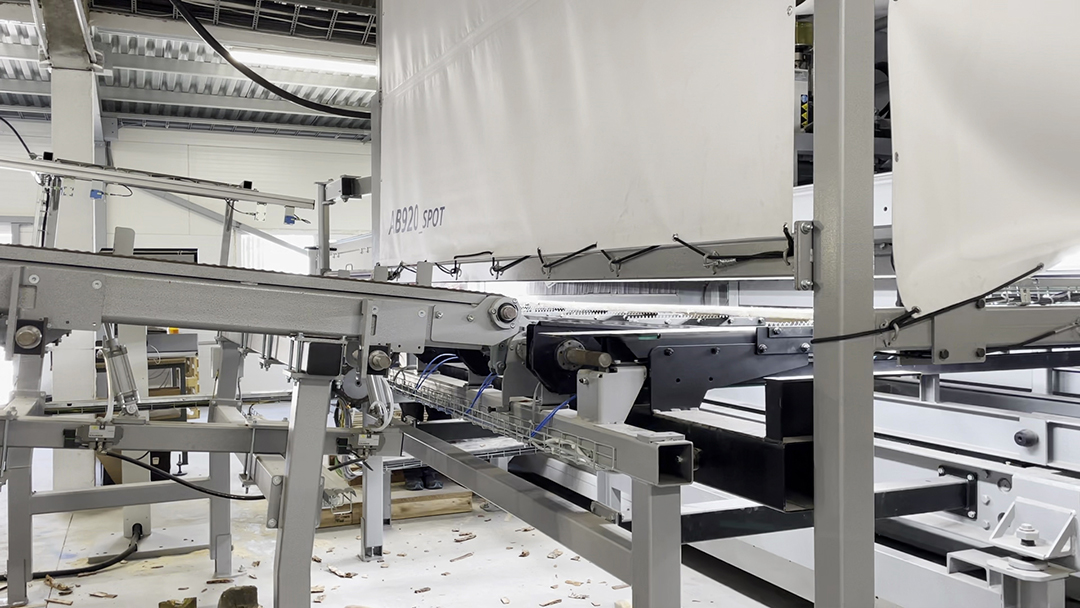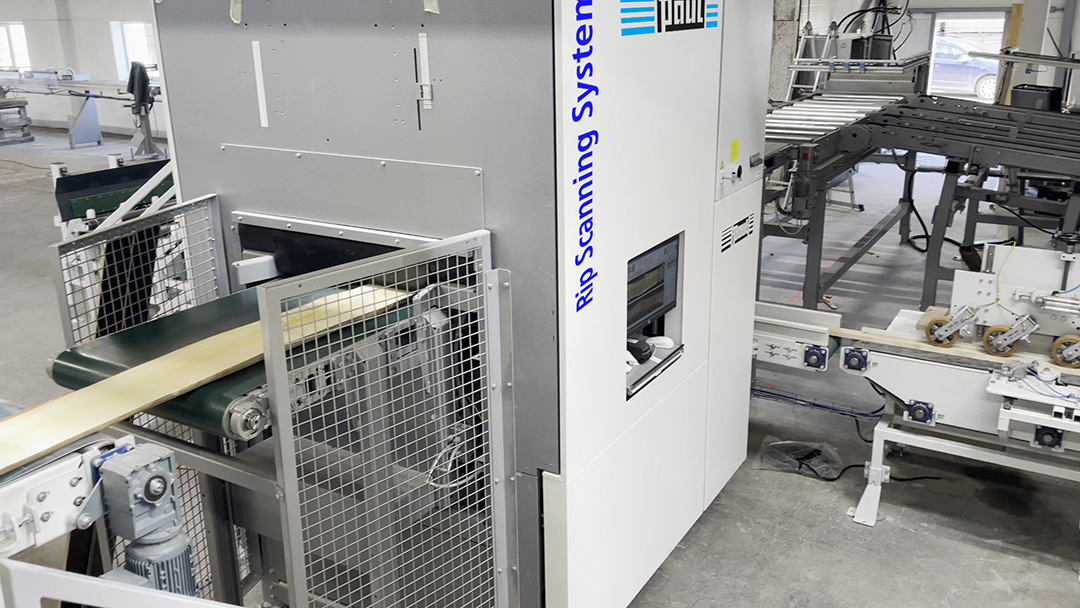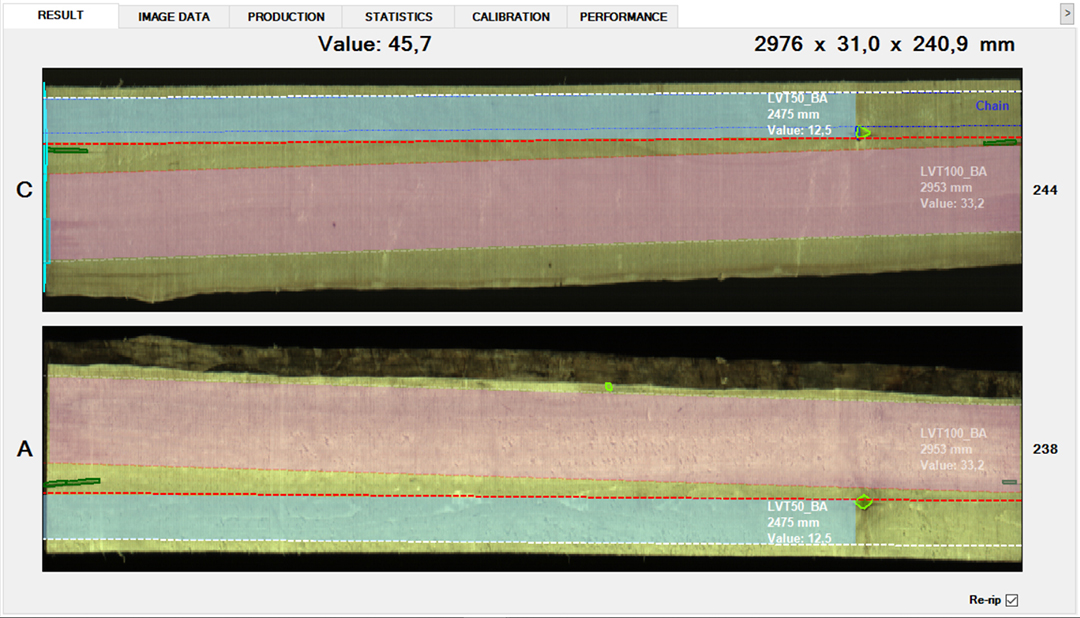 The AB920_SPOT automatic infeed system detects the position of the workpieces and positions them in front of the ripsaw according to the scanner's specifications.
The AB920_SPOT automatic infeed system detects the position of the workpieces and positions them in front of the ripsaw according to the scanner's specifications.
As demand for skilled labour increases, automation is becoming more and more important in modern woodworking. Not only are machines and systems increasingly taking over the handling of the often heavy workpieces, but the fully automatic quality evaluation and optimization of the material is also gaining ground. Paul Maschinenfabrik (Dürmentingen/Germany) can score points with its economical scanner solutions for cross-cutting and ripping.
Recently, Paul supplied a rip scanner to Krauss LTD, a leading birch processing company in Latvia. Krauss has been involved in the production of furniture parts, mouldings and glued parts since 2001 and takes care of the entire processing from the saw timber to the finished product as well as the utilization of wood waste for the production of wood briquettes. The company was looking for an economical solution to increase yield, quality and performance. For this application, Paul's designers combined the newly developed Rip Scanning System with a CGL ripsaw, which is equipped with four movable saw bushes in telescopic design.
The unedged and dried boards are destacked, singulated and detected from above and from below using cameras as they are passing through in longitudinal direction. The scanner software detects the previously defined defects as well as the board geometry and optimizes based on the stored cutting list. Taking into account the turning and positioning options of the board as well as the adjustment of the saw blades, the software calculates the optimum cutting pattern. If required, two different cutting directions are possible on the same board by means of a re-rip piece, which increases optimization. Furthermore, the scanner can use the available data to additionally incorporate the optimization result for a subsequent cross-cutting process.
Once a workpiece has been detected and the cutting pattern calculated, it is fed to the ripsaw. The automatic, camera-supported AB920_SPOT infeed system detects the position and optimally aligns the workpiece according to the scanner's specifications. The saw blades of the CGL move quickly into position before the board passes through the saw. The climb cutting CGL is characterized by precise workpiece guidance, very good cutting quality and minimal saw kerfs. It particularly demonstrates its strengths in width cutting of dried hardwoods, but can also score points in numerous other applications. With up to four positioning units in telescopic design, the CGL achieves maximum flexibility and minimum saw blade spacing.
The customer was already satisfied immediately after the installation of his system, as the efficiency of production increased measurably in a short period of time. The scanner completely relieves the operator of the formerly manual evaluation and thus relieves him of a strenuous activity. In addition, the scanner divides the workpieces many times faster and more accurately than an operator can do visually.

